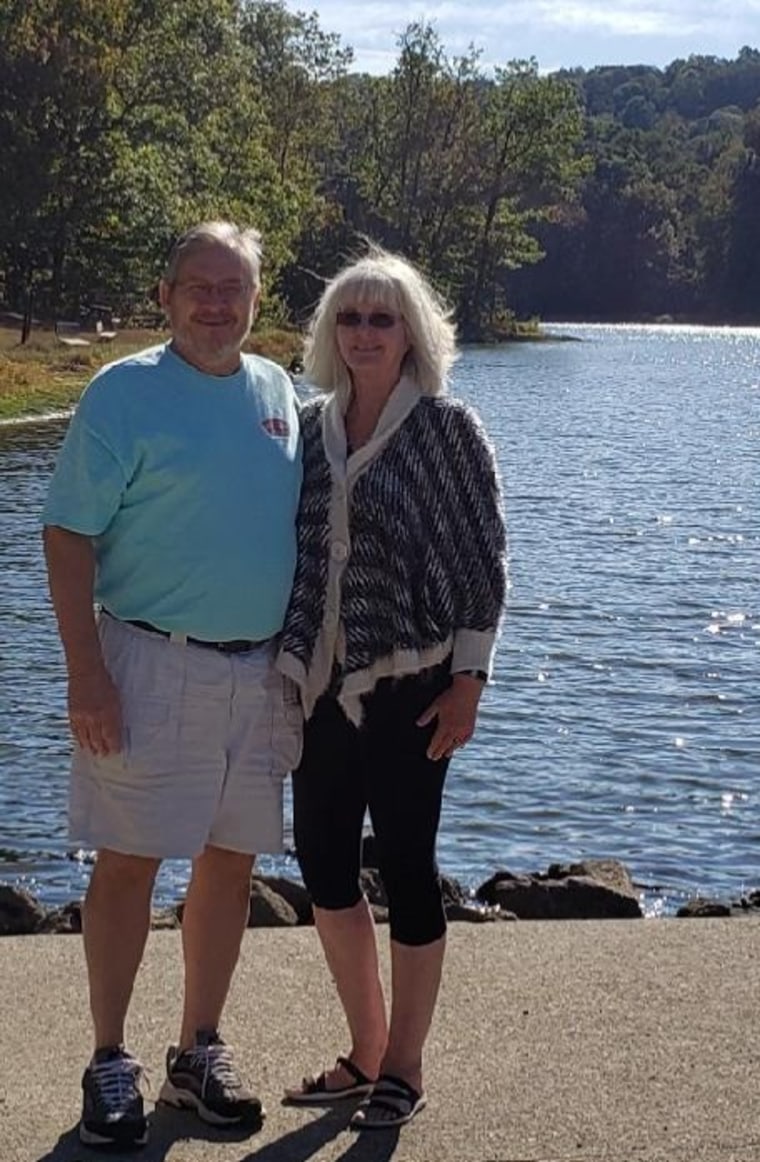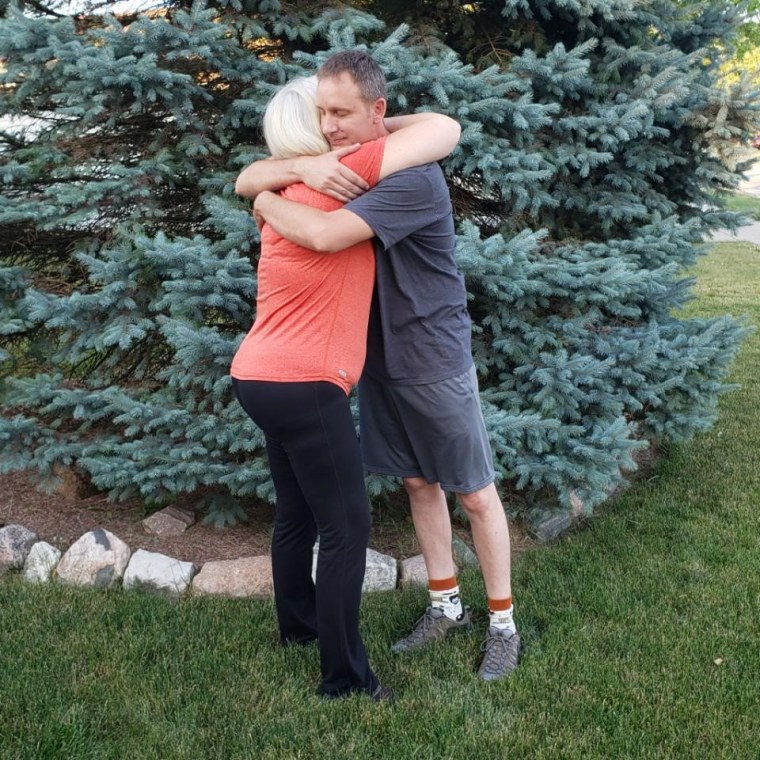During a routine doctor's visit, Deborah Wissen’s cardiologist ordered a scan of her head and neck. Her doctor had been monitoring her carotid artery, a major blood vessel in the neck, and wanted to take a closer look. The image revealed a surprise: Wissen had two aneurysms in her brain.
“I think it was divine intervention why he would do a brain scan,” Wissen, 64, of Avon, Indiana, told TODAY. “My belief is God knew I needed to have that.”

When she later experienced an excruciating headache, she quickly went to the emergency room to receive care. This made a huge difference in her outcome.
“Had my cardiologist not done a brain scan, I would have been sent home,” she said. “God … has put all these things in place so I am here today alive.”
Headache causes facial drooping
According to the Brain Aneurysm Foundation, 1 in 50 people have an unruptured brain aneurysm. An aneurysm is when a weak section of a blood vessel enlarges, it's usually described as a "ballooning" of the vessel. When a brain aneurysm ruptures, it can cause bleeding into the space around the brain, which can lead to sudden symptoms (severe headache, nausea, stiff neck, blurred vision and more).
Women are more likely than men to experience a brain aneurysm, and women over the age of 55 have a higher risk of brain aneurysm rupture than men.
In Dec. 2019, a few months after her visit with her cardiologist, Wissen started experiencing worrisome symptoms and she knew she had to take swift action. She first developed what felt like a sinus headache, located behind her eye. While she hoped that it would pass, it soon became clear this was no ordinary headache.
“I felt wrong. My hearing was off,” she explained. “My headache got worse and worse ... My eye was starting to droop and it was tearing. I was talking to a friend of mine and it sounded like we were in a tunnel,” she said. “I said, ‘I have to go to the emergency room, something is really wrong.'”
Doctors suspected she was having a cluster migraine, which is why the pain was located in one area.
“I was walking, talking, carrying on conversations. I was doing just fine,” she said. “I had this eye that was drooping and my hearing was off and I had a massive headache.”

So Wissen mentioned that her brain scan showed she had two aneurysms.
“I told them ‘That’s great, but I never had a migraine and I never get a headache and I have been diagnosed with brain aneurysms,'” Wissen said. “They gave me a CT scan and I had blood on the brain.”
Doctors transferred her to IU Health Methodist Hospital in Indianapolis for further treatment. Brain aneurysms, which are like “blisters on blood vessels,” are rare, IU Health neurologist Dr. Brad Bohnstedt, said. But when they burst, it is an emergency.
“Up to 6% of the population will have these blisters on their blood vessels. It’s a much smaller fraction than that who will actually end up having a bleed from them,” he told TODAY. “When they have a bleed, it’s usually a severe headache. It may be a loss of consciousness. People will pass out. They may have a seizure.”
Without the scan, Wissen isn’t sure if she would have challenged the original migraine diagnosis.
“It wouldn’t have even occurred to me that I would have had a brain aneurysm,” she said. “What kind of frustrates me a little is that the side of my face was drooping and they were going to send me home.”
Minimally invasive technique leads to quicker recovery
There were several options to fix the ruptured aneurysms and Wissen opted for one that involved a catheter in the groin up to her neck, and threading coils through it to get into the aneurysms. The coils fill the space “kind of like a pothole on the road gets filled with asphalt,” Bohnstedt said.
“With the coil, it stops the blood flow going into that area, and then the blood can just run right on by that aneurysm without filling it in or without going into it and causing the rupture again,” he said. “When it comes to having a ruptured aneurysm, our studies have shown people have better outcomes overall if we treat them inter vascular as opposed to open surgery.”

Wissen’s recovery has gone well and her ability is almost back to what it was prior to the ruptured aneurysms.
“I’m just thrilled,” she said. “For the most part, everything is just fine. I don’t like the glare from the sun or other objects. … I have a little bit of a tremor in my right hand.”
Though she admits that the tremor could be due to her age. She’s now walking between 12,000 and 15,000 steps a day and enjoys painting. Wissen hopes her experience will encourage people to seek help when they feel unwell.
“If everything happened a little differently, I may not be here. There is a reason I am here and a reason why I am telling my story,” she said. “I want people to not be afraid if something is wrong and to get it taken care of.”
